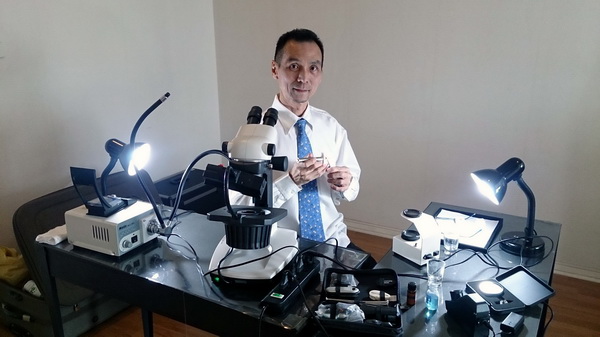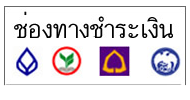Yellow of the Sapphire

Colors of the Precious Gems
Chapter 1 : Yellow of the Sapphire
The color of the precious gemstones is related to our familiar basic colors (red, blue, yellow and green) which are illustrated by the ruby, the blue sapphire, the yellow sapphire and the emerald. In spite of the fact that colored diamonds do exist but diamonds are not mentioned anyhow because they are mostly colorless.
Each of this major hue is also composed of various ranges (or nuance) of colors due to its degree of saturation, its tone and its tinge. Hence terms of color are designated to label the particular degree of colors such as : the royal blue, the peacock, the cornflower for “the blue”, the lemon, the canary and the golden for “the yellow” or the pigeon blood, the royal red, the scarlet for ”the red”…etc. To illustrate or to depict a particular color, people in each country compare the color of gems to the object or to the nature of their surrounding environment. These metaphors help them to better figure out the shade of a particular gemstone. And that is the wisdom of the local people. We ourselves have to make acquaintance with this glossary of color in order to communicate with others. If you are involved in the gem trade, you have even to know the penchant for color of people in each region and country. For example, American people tend to be fond of the deep color such as the strong blue or the deep red, in Europe, people like the medium tone and the people of the far-east (for example “Japanese”) prefer the sweet pastel shade.
For the topic of colors in precious gemstones, we will begin with one of the most familiar gems in Thailand “the Yellow Sapphire”. The following chart illustrates the different degree of saturation and tone of the yellow sapphire:
Pastel Yellow : The pale yellow sapphires are mostly the gems of Sri Lankan and African origin.
Lemon : The beginning yellow for the Thai sapphire.
Bright Yellow : The hue of medium saturation.
Canary : Yellow with medium up to high saturation.
Golden Yellow : Yellow of high saturation which exhibits high surface luster.
Golden : The sparkling yellow of high saturation and highest luster (almost sub-adamantine)
The chart above shows us the standard color range of the “yellow sapphire”. But, in Thailand, the category of yellow continues further into the brownish range which is typically called as “ Mae Khong-colored ” or, in the other word, “whisky-colored”. The following chart depicts the series of the whisky-colored sapphires : We note that when it goes out of the standard range of yellow, the tinge of a brownish color is perceived. Because in the following range, the light begins to be absorbed by the gems which results in giving darker tones. Such deep tone is not so interesting for most of the foreigners. By the way, the brownish tinge indicates the drop in color saturation, for example : the brownish red , the brownish yellow …etc. In the other word, the tinge of brown indicates the hue position that sledges away from the main color(yellow). Anyhow, surprisingly, this whisky-colored gem obtains the popularity from the local Thai people.
We note that when it goes out of the standard range of yellow, the tinge of a brownish color is perceived. Because in the following range, the light begins to be absorbed by the gems which results in giving darker tones. Such deep tone is not so interesting for most of the foreigners. By the way, the brownish tinge indicates the drop in color saturation, for example : the brownish red , the brownish yellow …etc. In the other word, the tinge of brown indicates the hue position that sledges away from the main color(yellow). Anyhow, surprisingly, this whisky-colored gem obtains the popularity from the local Thai people.
People in the trade should be able to analyze the preference in color (the taste) of their consumers to the scope of the local, regional, national and even to the international. If you emphasize on exporting to the foreign countries, you must stock the colored gems in accordance with the international demand. So keeping the range of the standard yellow (range of pastel yellow to golden) is recommended.
My fan club asked me which shade of yellow sapphire he should take if he desired to have one. Simply, I just pose a question back to him asking what he would do with the gem. If the answer is for making his personal jewellery, then I just tell him to take any shade or any tone he want. Because the taste is something individual. It is related to one’s personality. And there is no need to imitate the personality of others. On the contrary, if he intends to keep as an asset for the long-term investment, I would advise him to take a gem of the standard color (good saturation) and a gem of a fair size (a medium size of 3-4 carats up). “The bigger the better” , “The bigger the rarer” …which is the common rule that governs the price of all precious gems . But bear in mind that, apart from the color and the size which are the first rule to evaluate the colored gems, there are many other dimensions to deal with: clarity, shape, cut, brilliance…etc. The factors for the gem appraisal have been mentioned in the previous articles that you can browse in the article page of my website.
Delving into the world of colored gems and spending time to get acquainted with various specimens as much as possible help us to gain experiences through practice. This field training is essential for both the amateur gem collectors and the professional ones. I hope that this article can serve as a brief guideline to select your gem. So enjoy yourself in the blessed & colorful world of gemstone which is the gift of the mother earth
1 September 2016
Siriwat Jiamanunsorn (FGA)
คลีนิกอัญมณี
"คลีนิกอัญมณี" เป็นคอลั่มน์รวมบทความต่างๆทางอัญมณีศาตร์ ทั้งที่เกี่ยวกับแวดวงการค้าอัญมณี และในเชิงวิชาการของการตรวจวิเคราะห์พลอยประเภทต่างๆในห้องแลบ ยังรวมไปถึงเรื่องราวอัญมณีที่อยู่ในกระแสความสนใจซึ่งอาจมาจากคำถามที่พบบ่อยเป็นต้น บทความที่ผมเขียนขึ้นจะถูกรวบรวมไว้ในที่นี้ ท่านสามารถติดตามบทความใหม่ของเราที่จะนำเสนอเป็นระยะๆ รวมถึ่งการอ่านเรื่องย้อนหลังได่อีกด้วย
วัฒน์
(หมอพลอย)


SEARCH
Categories
MEMBER
- ระดับ{{userdata.dropship_level_name}}
- ไปหน้าหลักตัวแทน
- ทั้งหมด {{(order_nums && order_nums.all)?'('+order_nums.all+')':''}}
- รอการชำระเงิน {{(order_nums && order_nums.wait_payment)?'('+order_nums.wait_payment+')':''}}
- รอตรวจสอบยอดเงิน {{(order_nums && order_nums.wait_payment_verify)?'('+order_nums.wait_payment_verify+')':''}}
- รอจัดส่งสินค้า {{(order_nums && order_nums.wait_send)?'('+order_nums.wait_send+')':''}}
- รอยืนยันได้รับสินค้า {{(order_nums && (order_nums.wait_receive || order_nums.wait_confirm))?'('+(order_nums.wait_receive+order_nums.wait_confirm)+')':''}}
- รอตรวจสอบข้อร้องเรียน {{(order_nums && order_nums.dispute)?'('+order_nums.dispute+')':''}}
- เรียบร้อยแล้ว {{(order_nums && order_nums.completed)?'('+order_nums.completed+')':''}}
- ทั้งหมด {{(order_nums && order_nums.all)?'('+order_nums.all+')':''}}
- รอการชำระเงิน {{(order_nums && order_nums.wait_payment)?'('+order_nums.wait_payment+')':''}}
- รอตรวจสอบยอดเงิน{{(order_nums && order_nums.wait_payment_verify)?'('+order_nums.wait_payment_verify+')':''}}
- รอจัดส่งสินค้า {{(order_nums && order_nums.wait_send)?'('+order_nums.wait_send+')':''}}
- ส่งสินค้าเรียบร้อยแล้ว {{(order_nums && order_nums.sent)?'('+order_nums.sent+')':''}}
STATISTICS
| หน้าที่เข้าชม | 370,545 ครั้ง |
| ผู้ชมทั้งหมด | 273,296 ครั้ง |
| เปิดร้าน | 17 ก.พ. 2559 |
| ร้านค้าอัพเดท | 20 ส.ค. 2568 |
CONTACT US
LINK
ติดต่อสอบถาม
 โทรศัพท์: 081-8102763
โทรศัพท์: 081-8102763
![]() LINE ID: siriwat28
LINE ID: siriwat28
 siriwat.jiamanusorn@gmail
siriwat.jiamanusorn@gmail
 Fanpage: @jwlab.gem
Fanpage: @jwlab.gem

TRACK&TRACE

TOP เลื่อนขึ้นบนสุด





